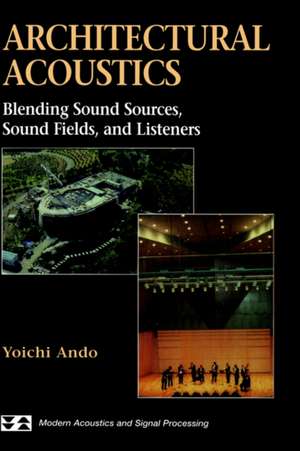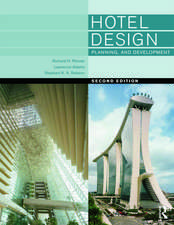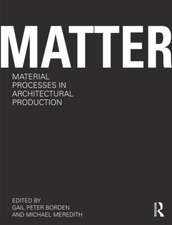Architectural Acoustics: Blending Sound Sources, Sound Fields, and Listeners: Modern Acoustics and Signal Processing
Autor Yoichi Andoen Limba Engleză Hardback – 10 iul 1998
| Toate formatele și edițiile | Preț | Express |
|---|---|---|
| Paperback (1) | 386.81 lei 6-8 săpt. | |
| Springer – 5 oct 2012 | 386.81 lei 6-8 săpt. | |
| Hardback (1) | 391.79 lei 6-8 săpt. | |
| Springer – 10 iul 1998 | 391.79 lei 6-8 săpt. |
Din seria Modern Acoustics and Signal Processing
- 20%
 Preț: 814.25 lei
Preț: 814.25 lei - 18%
 Preț: 1327.39 lei
Preț: 1327.39 lei - 18%
 Preț: 1216.78 lei
Preț: 1216.78 lei - 15%
 Preț: 721.06 lei
Preț: 721.06 lei -
 Preț: 393.35 lei
Preț: 393.35 lei - 15%
 Preț: 662.49 lei
Preț: 662.49 lei - 20%
 Preț: 344.93 lei
Preț: 344.93 lei - 18%
 Preț: 908.04 lei
Preț: 908.04 lei - 18%
 Preț: 1006.72 lei
Preț: 1006.72 lei - 15%
 Preț: 609.14 lei
Preț: 609.14 lei - 18%
 Preț: 944.36 lei
Preț: 944.36 lei - 15%
 Preț: 646.94 lei
Preț: 646.94 lei - 18%
 Preț: 1331.18 lei
Preț: 1331.18 lei -
 Preț: 389.88 lei
Preț: 389.88 lei -
 Preț: 393.74 lei
Preț: 393.74 lei - 18%
 Preț: 959.36 lei
Preț: 959.36 lei - 15%
 Preț: 695.16 lei
Preț: 695.16 lei -
 Preț: 388.52 lei
Preț: 388.52 lei - 5%
 Preț: 1134.30 lei
Preț: 1134.30 lei - 24%
 Preț: 779.33 lei
Preț: 779.33 lei - 18%
 Preț: 2121.68 lei
Preț: 2121.68 lei - 15%
 Preț: 665.79 lei
Preț: 665.79 lei - 15%
 Preț: 663.45 lei
Preț: 663.45 lei - 15%
 Preț: 597.99 lei
Preț: 597.99 lei - 18%
 Preț: 1413.76 lei
Preț: 1413.76 lei - 24%
 Preț: 759.77 lei
Preț: 759.77 lei - 18%
 Preț: 1411.69 lei
Preț: 1411.69 lei
Preț: 391.79 lei
Nou
Puncte Express: 588
Preț estimativ în valută:
74.97€ • 80.17$ • 62.51£
74.97€ • 80.17$ • 62.51£
Carte tipărită la comandă
Livrare economică 18 aprilie-02 mai
Preluare comenzi: 021 569.72.76
Specificații
ISBN-13: 9780387983332
ISBN-10: 0387983333
Pagini: 252
Ilustrații: XV, 252 p.
Dimensiuni: 155 x 235 x 19 mm
Greutate: 0.5 kg
Ediția:1998
Editura: Springer
Colecția Springer
Seria Modern Acoustics and Signal Processing
Locul publicării:New York, NY, United States
ISBN-10: 0387983333
Pagini: 252
Ilustrații: XV, 252 p.
Dimensiuni: 155 x 235 x 19 mm
Greutate: 0.5 kg
Ediția:1998
Editura: Springer
Colecția Springer
Seria Modern Acoustics and Signal Processing
Locul publicării:New York, NY, United States
Public țintă
GraduateCuprins
1. Introduction.- 2. Short Historical Review for Acoustics in a Performing Space.- 3. Physical Properties of Source Signals and Sound Fields in a Room.- 3.1. Analyses of Source Signals.- 3.2. Autocorrelation Function of Piano Signal with Varying Performing Style.- 3.3. Sound Transmission from a Point Source to Binaural Entrances.- 3.4. Physical Factors of Sound Field.- 3.5. Simulation of Sound Field.- 4. Subjective Preference as an Overall Impression of the Sound Field.- 4.1. Subjective Preference of the Simple Sound Field.- 4.2. Orthogonal Properties of Acoustic Factors.- 4.3. Optimum Design Objectives.- 4.4. Theory of Calculating Scale Values of Subjective Preference.- 4.5. Examination of Subjective Preference in an Existing Hall.- 5. Human Hearing System.- 5.1. Physical Systems of Human Ears.- 5.2. Influence of Electro-Physiological Responses from Auditory Pathways and Human Cerebral Hemispheres Relating to Subjective Preference.- 5.3. Influence of the Continuous Brain Wave (CBW) onSubjective Preference.- 5.4. Auditory—Brain System: A Proposed Model.- 6. Important Subjective Attributes for the Sound Field, Based on the Model.- 6.1. Subjective Diffuseness and ASW in Relation to the IACC and/or theWIACC.- 6.2. Subjective Attributes of the Sound Fields with a Single Reflection in Relation to the ACF of the Source Signals.- 6.3. Loudness in Relation to the Effective Duration of the ACF.- 6.4. Speech Intelligibility and Clarity in Relation to the Temporal Factor (TF) and the IACC.- 7. Subjective Effects of Sound Field on Performers.- 7.1. Subjective Preference of Performer for Sound Field on the Stage.- 7.2. Influence of the Music Program Selection on Performance.- 7.3. Selection of the Performing Position for Maximizing Listener’s Preference.- 8. Passive Control of Sound Field by Design.- 8.1. Control of the IACC by Side Walls.- 8.2. Control of the IACC by Ceilings.- 8.3. Influence of Diffusers on Walls and Ceilings.- 8.4. Reflectors near the Ceiling.- 8.5. Floor Structure and Seating.- 9. Individual Listener Subjective Preferences and Seat Selection.- 9.1. Individual Preference According to Orthogonal Factors.- 9.2. Effects of Lighting on Individual Subjective Preference.- 9.3. Inter-Individual Differences in Preference Judgments.- 9.4. Seat Selection System for Individual Listening.- 10. Case Studies of Acoustic Design.- 10.1. Concert Hall Design.- 10.2. Multiple-Purpose Auditoria.- 11. Acoustical Measurements of the Sound Fields in Rooms.- 11.1. Binaural Impulse Response.- 11.2. Reverberation Time.- 11.3. Measurement of Acoustic Factors at Each Seat in a Concert Hall.- 11.4. Recommended Method for the IACC Measurement.- 11.5. Physical Properties of a Forest as an Acoustic Space.- 12. Generalization to Physical Environmental Planning Theory.- 12.1. A Generalized Theory of Designing Physical Environments.- 12.2. Examples of Physical Environmental Planning.- Appendix I. Method of Factor Analysis.- Appendix II. Design of Electroacoustic Systems.-II.1. The IACC of a Two-Channel-Loudspeaker-Reproduction System.- II.2. A System of Controlling Temporal Factors.- Appendix III. Time-Variant Sound Fields: Variable-Delay Time of a Single Reflection.- References.- General Reading.- Glossary of Symbols.- Abbreviations.- Author Index.
Caracteristici
This book proceeds from basic theory to design studies of concert and multiple purpose halls. Readers can follow the temporal and spatial values that may be associated with the left and right cerebral hemispheres in listening to music and speech, respectively, in a room. The author has paid special attention to stimulating the left and the right hemispheres of the brain with both text and illustrations. Written at the level of advanced undergraduate students, this book should be of interest not only to acoustical engineers and architects, but also to musicians, acoustical consultants, audio engineers, and sound coordinators of concert halls and theaters, as well as researchers.






